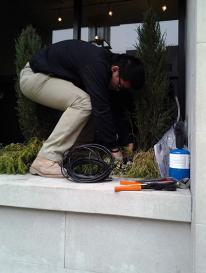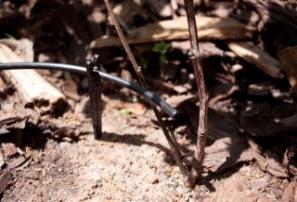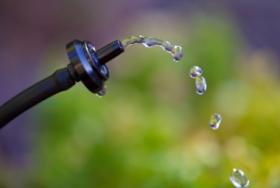Have a Drip System Installed By Our Channelview Irrigation Installation Team
 We are huge advocates of drip irrigation for planting beds. If you have an existing irrigation system for watering your lawn and flower beds, we think you'd be better off with a dual system. Our Channelview irrigation installation team can add a new drip run to your existing system and optimize it relatively cheaply. You'll end up with better looking plants, fewer weeds and a lower water bill.
We are huge advocates of drip irrigation for planting beds. If you have an existing irrigation system for watering your lawn and flower beds, we think you'd be better off with a dual system. Our Channelview irrigation installation team can add a new drip run to your existing system and optimize it relatively cheaply. You'll end up with better looking plants, fewer weeds and a lower water bill.
Drip zones in your planting bed areas will reduce water usage and waste by applying water only to the root sections of your plantings. This targeted watering promotes deep root growth and prevents water lost to evaporation. It also prevents excess water from being applied to areas where weeds would typically grow. Drip lines also don't get blocked by leaves or get leaves wet (a major cause of mold and mildew on plants like roses) like can happen with spray heads.
Why Use Drip Irrigation in Channelview TX
 Drip lines don't waste water through evaporation
Drip lines don't waste water through evaporation- Drip lines do not encourage weed growth
- Drip lines can be used in any planting bed
- Drip lines encourage deep root growth and disease resistant plants
- Drip lines can be added to existing systems
- Drip lines can be placed on a controller system
Drip Irrigation System Basics
 Drip irrigation lines are generally made from polyethylene tubing that has emitters attached along the length of it near the roots of your plants. The size of the tubing and the drip rate of the emitters can vary based on what you need in your planting bed. In most cases, a single run should never be longer than 200 feet from beginning to end. If it gets to this length the water pressure at the end of the line may not be strong enough to feed your emitter.
Drip irrigation lines are generally made from polyethylene tubing that has emitters attached along the length of it near the roots of your plants. The size of the tubing and the drip rate of the emitters can vary based on what you need in your planting bed. In most cases, a single run should never be longer than 200 feet from beginning to end. If it gets to this length the water pressure at the end of the line may not be strong enough to feed your emitter.
Some irrigation teams like to bury the polyethylene line, but we find this leads to more clogging and damage by chipmunks, squirrels and mice. We will bury it if asked, but prefer not to.
When we place emitters, we can do so in two different ways. We can space them evenly across the line (which is good for linear plantings) or we can place them sporadically to handle specific plants (best for bushes and specimen plants). Spacing can be anywhere from a foot and a half apart to about six feet.
Since flow rates for drip lines is very low (a gallon an hour), they can be reduced to half of that for mature plants or late in the season.
The biggest problems with drip irrigation come from rodents. They like to chew on the end cap that closes off the emitter line.
If you have more questions about drip irrigation or would like to talk about installing one in your Channelview TX landscape, call us today.








